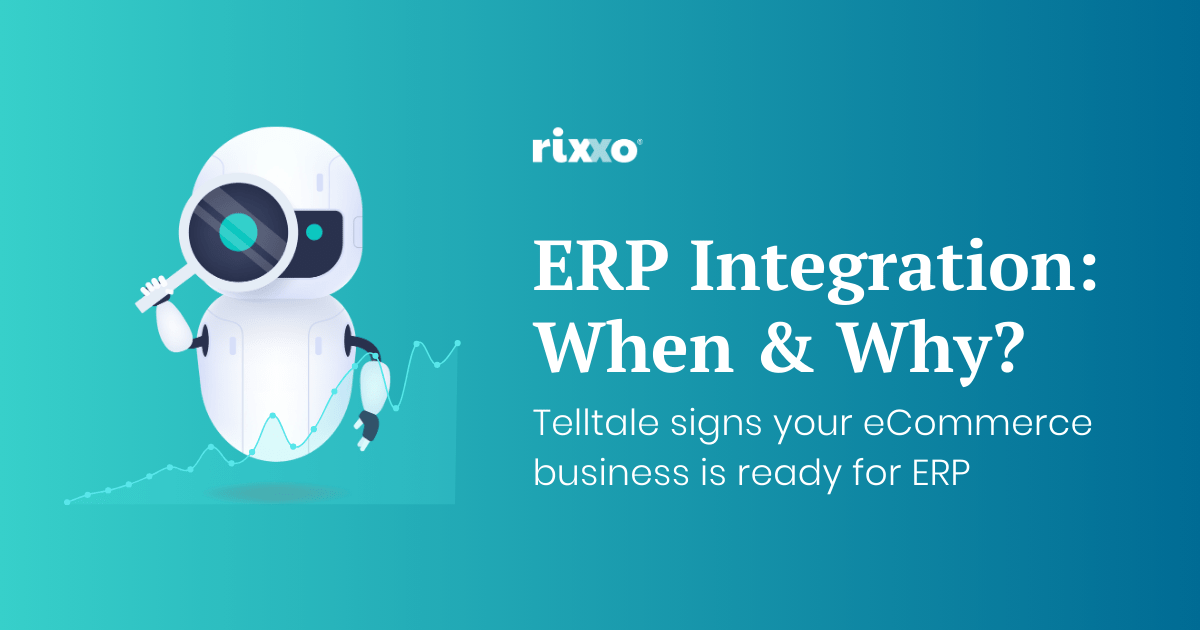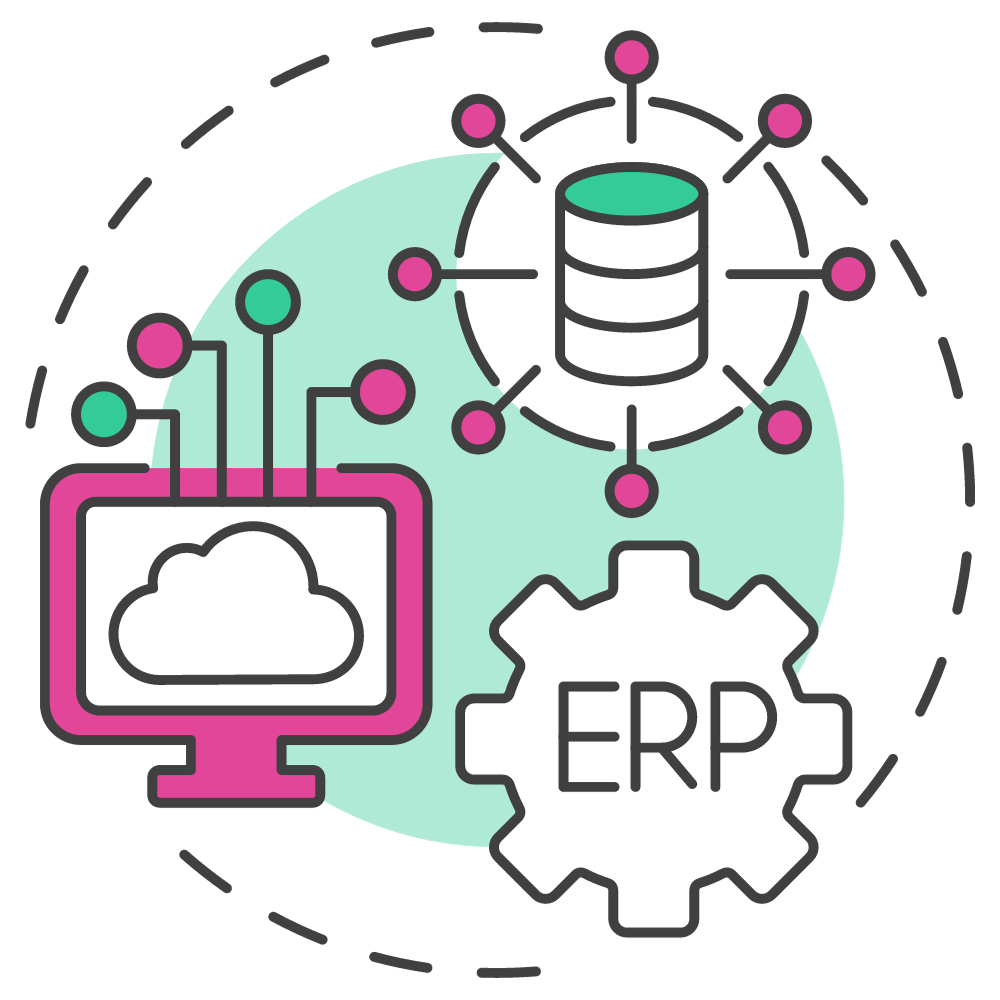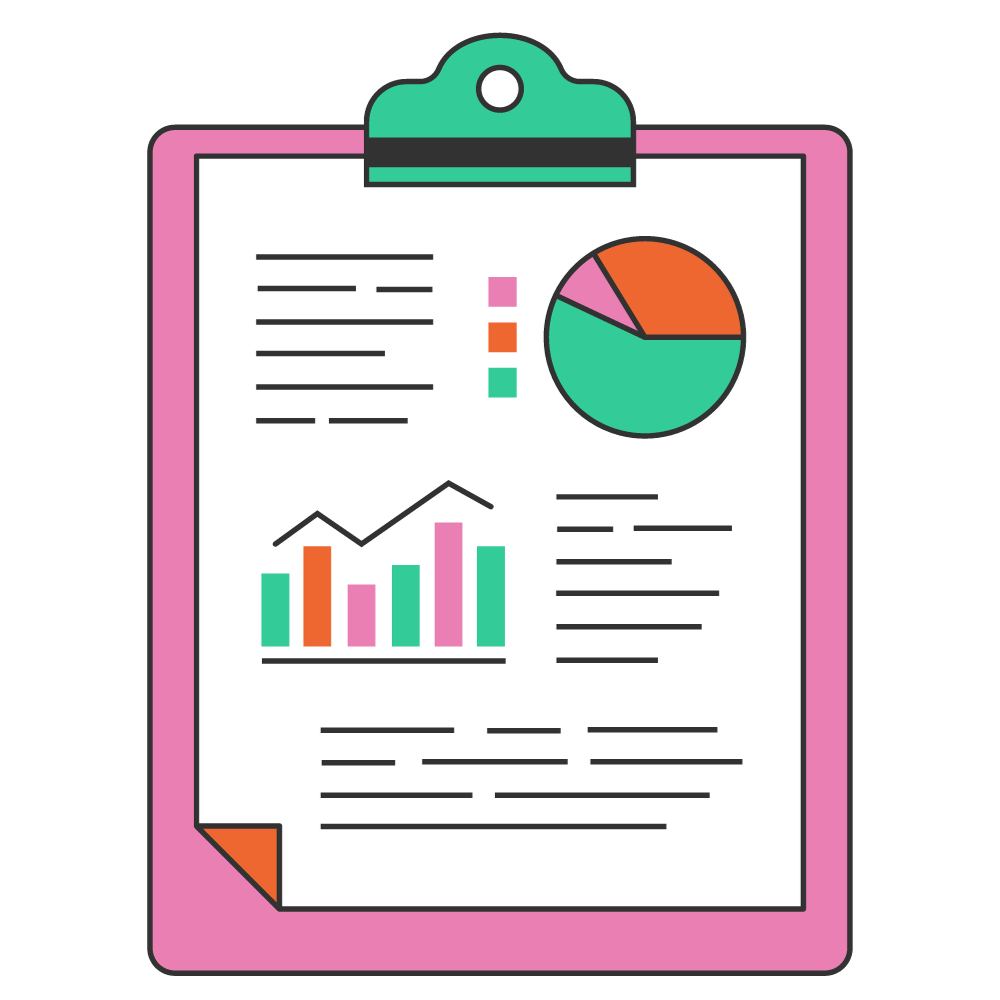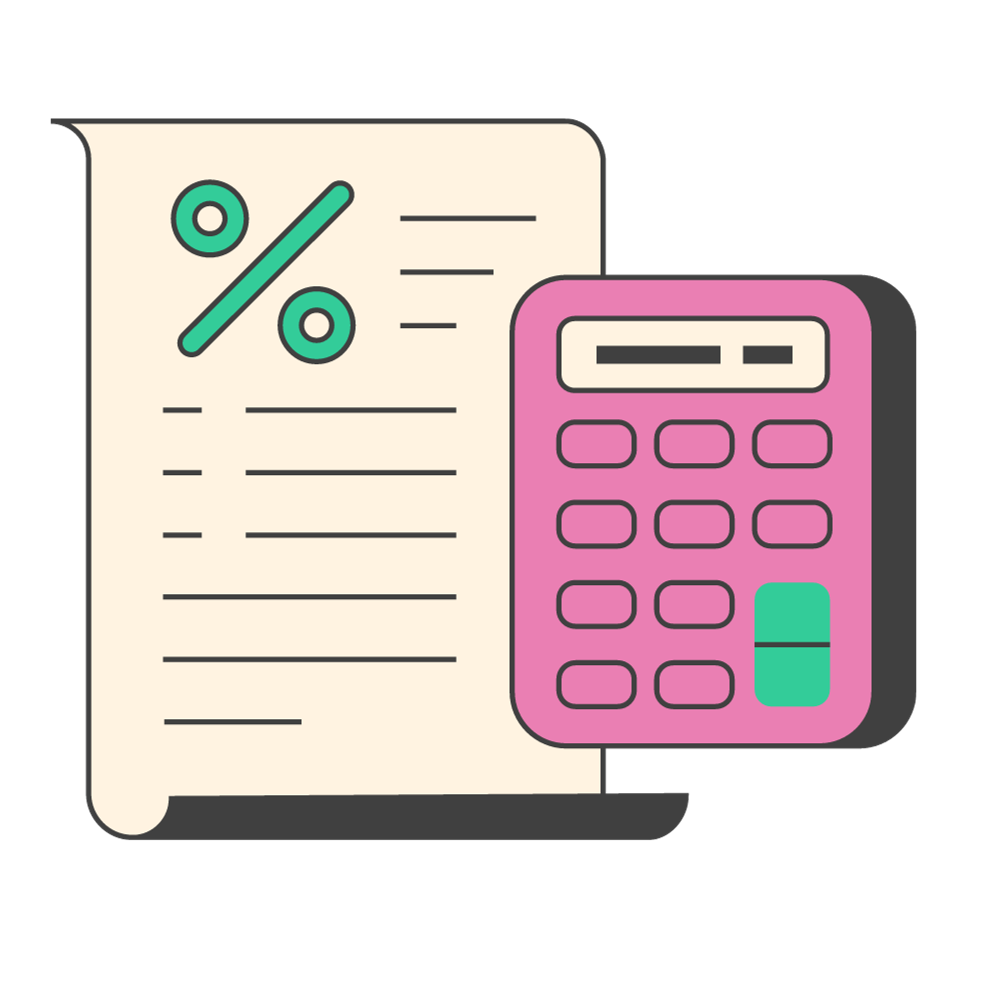ERP Integration: 14 Telltale Signs Your eCommerce Business is Ready

What are the signs that your eCommerce business needs an ERP integration?
Running an eCommerce business can be rewarding, but it’s not without its challenges. Whether it’s poor inventory management, insufficient data and analytics or inefficient order fulfilment and shipping processes, staying on top of every area of your business is an important, but often overwhelming task.
This is where Enterprise Resource Planning, or ERP integration is changing the game for eCommerce.
Imagine having a central nervous system for your business that connects the different departments—from inventory to sales, and customer service to accounting. An ERP integration does just that, knitting together various processes into one cohesive unit.
xBut how do you know it’s time for your business to take this step? Sometimes, the need for change makes itself known in subtle nudges, other times in loud disruptions. In this article, we’ll walk through the issues that signal your eCommerce operation may be ready for the benefits of ERP integration—signals that it’s time to boost your store’s efficiency and set the stage for significant growth.
Keep an eye out for these indicators. They may be pain points, but they are also opportunities for transformation, to unlock your business’s true potential.
Inventory mismanagement – A red flag
The perils of inaccurate inventory tracking
Managing your stock is the cornerstone of a thriving eCommerce business. When the inventory numbers aren’t right, the repercussions ripple outwards, from internal confusion to customer dissatisfaction. Inaccurate inventory tracking can lead to two major problems: overselling and stockouts.
Overselling occurs when you sell products you don’t have in stock. It’s an embarrassing scenario that can harm your reputation and lead to a loss of trust with your customers. On the flip side, stockouts happen when popular items are unavailable, which not only results in immediate lost sales but can also push customers to seek out your competitors, potentially losing their business for good.
How ERP integration maintains accurate inventory levels
ERP integration serves as a safeguard against these inventory mishaps. Implementing an ERP system lets your eCommerce store gain real-time insights into inventory levels across all channels. The system automates stock level updates with every sale and return, eliminating human error and ensuring that your product listings are always in sync with your actual stock.
Moreover, an ERP can alert you before stock levels reach a critical low, giving you ample time to reorder or ramp up production. This proactive approach to inventory management means you can maintain the delicate balance of supply and demand, ensuring that your business operates smoothly and your customers remain content.
Bottlenecks in order processing
When order fulfillment slows down
In a fast-paced eCommerce business, any delay in order processing can be the bottleneck in your operations that keeps customers from coming back. These delays often stem from a system that’s not fully in sync, where the journey of an order from placement to delivery is marred by miscommunication and errors.
Think of a scenario where a customer places an order, and it sits unnoticed due to a lack of real-time updates across your sales channels. Or, worse still, an item gets shipped late because the order slip was lost in a pile of paperwork. Such incidents are signs that you need a unified system that can keep up with the pace of incoming orders and the expectations of your customers. How ERP systems automate and streamline order processing
The conductor of your order-processing orchestra
ERP automates the flow of information from the point of sale to fulfilment centres and delivery teams. This means that as soon as an order is placed, inventory levels are adjusted, the packing slip is generated, and the shipping process begins—all without human intervention.
Furthermore, ERP systems can integrate with shipping carriers and automatically select the most cost-effective option, print shipping labels, and track orders until they are safely delivered. This level of automation removes human error, cuts down on delays, and ensures that your customers receive their purchases promptly. It’s not just about keeping pace; it’s about setting the tempo for a more efficient and customer-friendly eCommerce experience.
The data silo dilemma
Fragmented data leads to fragmented operations


Data silos are akin to isolated islands of information within an eCommerce business. These silos occur when different departments or branches of a business use separate systems that don’t communicate with one another. The result? A fragmented view of operations.
For instance, your marketing team might not have real-time access to sales data, leading to campaigns that are out of sync with inventory levels. Or, customer service may not have immediate updates on order status, resulting in a frustrating customer experience.
This compartmentalisation restricts visibility across your business and can lead to decisions that are based on incomplete data. When teams can’t see the full picture, the business suffers from inefficiencies and missed opportunities.
Centralised data for better insights
ERP integration acts as a bridge between these isolated islands, bringing together disparate streams of data into a centralised system. This unified system allows for a 360-degree view of your operations, where every piece of data is immediately available across all departments.
With an integrated ERP, the marketing team can see and understand sales trends in real-time, aligning their efforts with what’s happening on the ground. Customer service agents can instantly access order details, providing customers with accurate information and resolving issues more efficiently. Management can make informed decisions with confidence, knowing they have a comprehensive understanding of every aspect of the business.
Centralised data streamlines operations and provides deeper insights that can drive strategic business decisions. Predictive analytics and trend forecasting become more reliable, helping to propel the business forward on a foundation of solid, data-driven strategy.
The struggle for financial clarity


For any eCommerce business, clear and accurate reporting is essential. It’s the map that guides strategic decisions and helps navigate through the marketplace. But when reports are inadequate, it’s like sailing without a compass. Decisions become guesswork, and the business can easily veer off course. Integrated reporting consolidates all your data, giving you the full picture of your financial health, which in turn helps you make educated, strategic decisions.
Without integrated reporting, you may miss out on understanding which products are performing well, how your sales are trending, or what your real profit margins are. These blind spots can hinder your ability to respond to market changes, optimise operations, and grow your business
ERP solutions: reporting tools for real-time insights
ERP solutions transform reporting by providing a suite of powerful tools that deliver real-time insights. They pull together data from sales, purchasing, inventory, and customer interactions to produce comprehensive reports. This integration allows you to see the performance of different areas of your business at a glance.
With an ERP, you can customise reports to focus on the metrics that matter most to you, whether that’s cash flow, sales forecasts, or customer acquisition costs. You can track your business’s performance against your goals with precision, making adjustments as needed with confidence. Moreover, the ability to access these insights quickly means you can be agile, responding to opportunities and challenges as they arise.
ERP solutions shine a light on the blind spots in your business, giving you the clarity needed to steer towards success.
Inefficiencies: The barriers to scaling
Knowing when your systems are overstretched
Scaling your eCommerce business is not just about increasing sales; it’s about ensuring your systems can handle growth. When your current systems are overstretched, they become a bottleneck to expansion. If your website crashes during high-traffic periods or if your order processing becomes sluggish when sales spike, these are clear indicators that your infrastructure is straining under pressure.
As your business grows, adding new products, expanding into new markets, or increasing the number of transactions can exacerbate these problems. If your systems can’t scale with your business, you risk customer dissatisfaction, increased churn rates, and ultimately, lost revenue.
Scaling with ERP: Adapting to growth and managing complexity
Think of an ERP system as your business’s growth partner. As you roll out new products or dive into new markets, it adjusts, making sure all your new data and processes are woven in, without a hitch.
ERPs are built to manage complexity. They can automate processes across different regions, currencies, and languages, making them ideal for businesses looking to expand internationally. Plus, with ERP, you gain the ability to forecast and plan for growth, ensuring your resources are aligned with your business objectives.
An ERP system is more than a foundation; it’s a springboard for growth, capable of expanding as you do, ensuring that your business never outgrows its capabilities.
Customer service woes
The cost of poor data visibility
The HubSpot Customer Acquisition Study reveals that it’s becoming costlier and tougher to acquire new customers. As consumers become ever more sceptical and impatient, keeping them happy has never been more important.
Customers want quick, correct answers about things like product availability, order status, or delivery times. If your business can’t see this data in real-time, your customer service team will struggle to respond swiftly, which can leave your customers feeling frustrated and let down.
How ERP integration enhances customer experience
Integrating an ERP system can transform how your business operates. It gives your customer service team a clear view of everything they need to answer customer queries quickly and accurately. All the information about a customer — from personal details to their order history — is in one easy-to-access place. This means your team can offer a personalised and well-informed service.
ERP also makes the process of getting orders to customers smoother and more reliable, so they’re more likely to get their purchases on time. What’s more, it allows customers to help themselves by tracking their own orders and getting information without needing to wait for someone to get back to them.
By improving your service and providing accurate information, integrating an ERP system can significantly increase customer satisfaction. It gives your business the right tools to keep customers happy and coming back for more.
Supply chain snags
When vendor relationships get knotty
Supply chain management is pivotal to the success of an eCommerce business. Yet, when vendor relationships are tangled by miscommunication and data mishandling, the entire supply chain suffers. If you’re noticing that orders from suppliers are frequently incorrect, late, or not optimally priced, it may be time to look towards an ERP system. These inefficiencies can be a red flag, pointing to deeper issues in procurement and inventory management.
A seamless supply chain flow
An ERP system can untangle the knots by providing a central platform where all vendor data and interactions are managed. It allows for real-time tracking of orders, automated reordering based on inventory levels, and analysis of vendor performance. By streamlining communication and processes, an ERP ensures that everyone in the supply chain is on the same page, which can lead to better negotiation on prices, terms, and delivery schedules. This not only strengthens vendor relationships but also enhances your ability to meet customer demands promptly and effectively.
Accounting headaches


Bridging the accounting gaps
When sales and accounting are managed separately, it’s easy for financial data to fall out of sync. This can result in serious discrepancies that affect your ability to make sound financial decisions. For instance, if your sales data shows a healthy profit, but your accounting records tell a different story, pinpointing the exact financial health of your business becomes a challenge.
Unified financial management
ERP integration offers a way to bridge these gaps. By bringing sales and accounting into a single system, an ERP ensures that every transaction is reflected in your financial records in real-time. This not only eliminates discrepancies but also provides a clear, accurate picture of your financial status at any given time. With ERP, you can trust the numbers you see, which is essential for budgeting, forecasting, and planning your business strategy. It’s about achieving a level of financial clarity that can drive your eCommerce store to new heights of success.
Forecasting worries
Anticipating demand with precision
Having the right products available at the right time is as close to eCommerce nirvana as you can get. But when your systems are disconnected, creating a reliable forecast can feel like trying to complete a puzzle with missing pieces. Disjointed systems lead to fragmented data, making it challenging to predict future sales patterns, customer buying behaviour, or inventory requirements. These forecasting fumbles can result in overstocking, understocking, and missed sales opportunities.
How ERP systems improve forecasting accuracy
ERP systems bring coherence to the forecasting process. By utilising historical sales data, customer trends, and inventory levels, ERP software can provide a comprehensive view of past performance. This integrated data pool is then used to inform sophisticated forecasting models that are far more accurate than those based on isolated data sets.
With an ERP system, you can forecast demand with a higher degree of precision, adjusting for seasonal fluctuations, market trends, and promotional impacts. This data-driven approach not only improves inventory planning but also supports strategic decisions around pricing, marketing campaigns, and product development. By anticipating demand accurately, you’re better equipped to meet your customers’ needs and capitalise on sales potential.
Conclusion
In summary, this article suggests that an ERP system might be just what your eCommerce business needs. Are you dealing with inventory issues, slow order processing, or a complicated supply chain? Plus, let’s not forget the challenges in reporting and accounting. If any of these challenges sound familiar, it’s probably time to think about bringing an ERP into the mix. It’s not an expense; it’s an investment in your business’s future. An ERP can make a world of difference in how efficiently you operate and, ultimately, how your bottom line looks.
